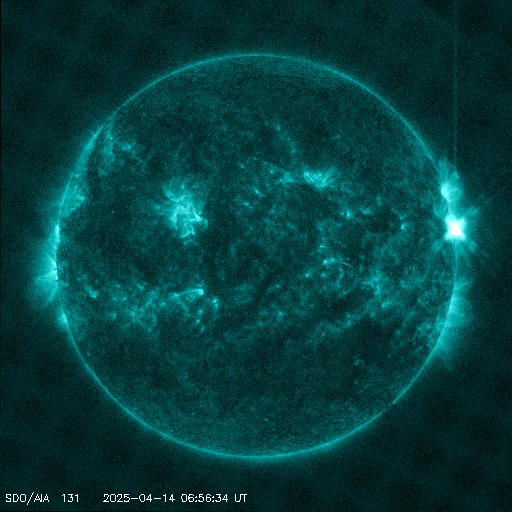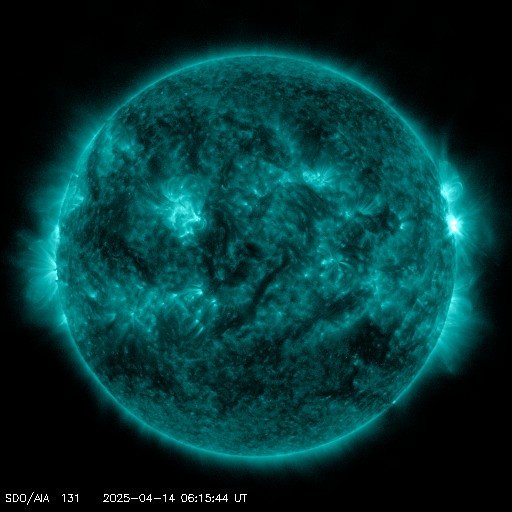Viewing archive of Tuesday, 16 February 2016
Daily bulletin on solar and geomagnetic activity from the SIDC
Issued: 2016 Feb 16 1236 UTC
SIDC Forecast
Solar flares
M-class flares expected (probability >=50%)
Geomagnetism
Minor storm expected (A>=30 or K=5)
Solar protons
Quiet
| 10cm flux | Ap | |
|---|---|---|
| 16 Feb 2016 | 105 | 026 |
| 17 Feb 2016 | 105 | 024 |
| 18 Feb 2016 | 105 | 010 |
Bulletin
Fourteen C flares were released by NOAA AR 2497 in the past 24 hours. The brightest flare was a C4.2 flare which peaked at 17:52 UT on February 15. M flares (probability 50%) and C flares (probability 85%) are possible within the next 24 hours, especially from AR 2497. The solar wind speed measured by ACE has been gradually rising from values near 410 km/s around 4h UT on February 16, and started a sharp rise around 10h UT towards a maximum of 570 km/s around 11h UT. Current values are near 530 km/s. The magnitude of the Interplanetary Magnetic Field has been near 15 nT since about 5h UT. This may correspond to the interaction region in front of the anticipated coronal hole high speed stream. Over the past 24 hours, geomagnetic conditions have been quiet to active (K Dourbes between 1 and 4; NOAA Kp between 1 and 4). Active to minor geomagnetic storm conditions (K Dourbes = 4-5) are possible on February 16 and 17, as a result of the anticipated coronal hole high speed stream. Active geomagnetic levels are possible on February 18.
Today's estimated international sunspot number (ISN): 046, based on 15 stations.Solar indices for 15 Feb 2016
| Wolf number Catania | 059 |
| 10cm solar flux | 107 |
| AK Chambon La Forêt | 023 |
| AK Wingst | 014 |
| Estimated Ap | 013 |
| Estimated international sunspot number | 054 - Based on 25 stations |
Noticeable events summary
| Day | Begin | Max | End | Loc | Strength | OP | 10cm | Catania/NOAA | Radio burst types | |
|---|---|---|---|---|---|---|---|---|---|---|
| None | ||||||||||
Provided by the Solar Influences Data analysis Center© - SIDC - Processed by SpaceWeatherLive
All times in UTC
Current data suggests there is a slight possibility for aurora to appear at the following high latitude regions in the near future
Edmonton, AB, Gillam, MB, Saskatoon, SK, Whitehorse, YT, Yellowknife, NTJuneau, AK
Latest news
Latest forum messages
Support SpaceWeatherLive.com!
A lot of people come to SpaceWeatherLive to follow the Sun's activity or if there is aurora to be seen, but with more traffic comes higher server costs. Consider a donation if you enjoy SpaceWeatherLive so we can keep the website online!

Latest alerts
07:09 UTC - Solar flare
Moderate M4.28 flare from sunspot region 4055
06:48 UTC - Radio Blackout
Minor R1 radio blackout in progress (≥M1 - current: M1.53)
06:24 UTC - Solar flare
Moderate M1.49 flare from sunspot region 4055
06:06 UTC - Radio Blackout
Minor R1 radio blackout in progress (≥M1 - current: M1.16)
04:45 UTC - Geomagnetic activity
Active geomagnetic conditions (Kp4) Threshold Reached: 04:29 UTC
Space weather facts
| Last X-flare | 2025/03/28 | X1.1 |
| Last M-flare | 2025/04/13 | M1.6 |
| Last geomagnetic storm | 2025/04/06 | Kp5 (G1) |
| Spotless days | |
|---|---|
| Last spotless day | 2022/06/08 |
| Monthly mean Sunspot Number | |
|---|---|
| March 2025 | 134.2 -20.4 |
| April 2025 | 132.1 -2.1 |
| Last 30 days | 132.4 -10.7 |





